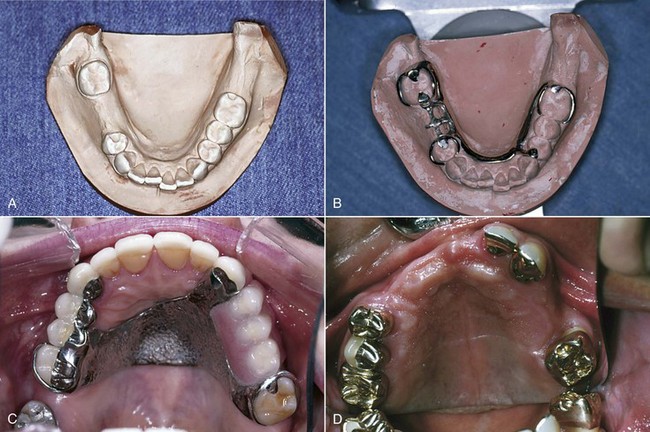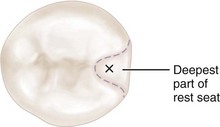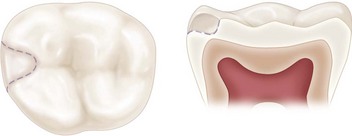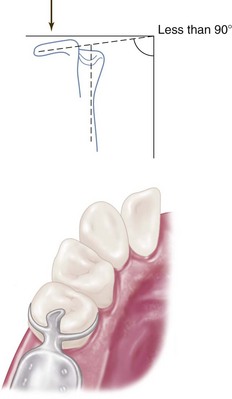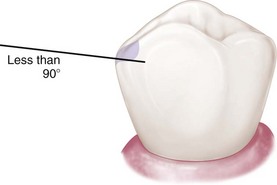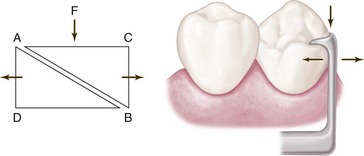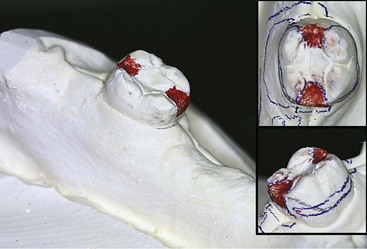CHAPTER 6 Rests and Rest Seats
Role of Rests in Control of Prosthesis Movement
Vertical support must be provided for a removable partial denture. Any component of a partial denture on a tooth surface that provides vertical support is called a rest (Figure 6-1). Rests should always be located on properly prepared tooth surfaces. The prepared surface of an abutment to receive the rest is called the rest seat. Rests are designated by the surface of the tooth prepared to receive them (occlusal rest, lingual rest, and incisal rest). The topography of any rest should restore the topography of the tooth that existed before the rest seat was prepared.
Form of the Occlusal Rest and Rest Seat
When an existing occlusal rest preparation is inclined apically toward the reduced marginal ridge and cannot be modified or deepened because of fear of perforation of the enamel or restoration, then a secondary occlusal rest must be employed to prevent slippage of the primary rest and orthodontic movement of the abutment tooth (Figure 6-7). Such a rest should pass over the lowered marginal ridge on the side of the tooth opposite the primary rest and should, if possible, be inclined slightly apically from the marginal ridge. However, two opposing occlusal rests on diverging tooth inclines will function to prevent unfavorable forces if all related connectors are sufficiently rigid. In any tooth-tissue–supported partial denture, the relation of the occlusal rest to the abutment should be that of a shallow ball-and-socket joint, to prevent a possible transfer of horizontal stresses to the abutment tooth. The occlusal rest should provide only occlusal support. Stabilization against horizontal movement of the prosthesis must be provided by other components of the partial denture rather than by any locking effect of the occlusal rest, which will cause the application of leverages to the abutment tooth.
Extended Occlusal Rest
In Kennedy Class II, modification 1, and Kennedy Class III situations in which the most posterior abutment is a mesially tipped molar, an extended occlusal rest should be designed and prepared to minimize further tipping of the abutment and to ensure that the forces are directed down the long axis of the abutment. This rest should extend more than one-half the mesiodistal width of the tooth, should be approximately one-third the buccolingual width of the tooth, and should allow for a minimum of 1-mm thickness of the metal; the preparation should be rounded with no undercuts or sharp angles (Figure 6-8).
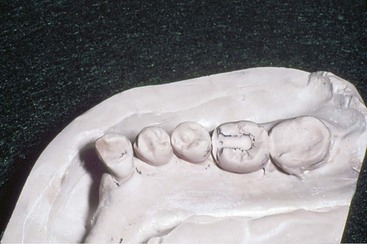
Figure 6-8 Cast shows extended occlusal rest on the mandibular first molar, designed to ensure maximum bracing from the tooth. If placed on a mesially inclined molar next to a modification space (as in Figure 6-7), the extended rest would ensure that the forces are directed down the long axis of the abutment, and therefore the disto-occlusal rest would not have been needed.
In situations in which the abutment is severely tilted, the extended occlusal rest may take the form of an onlay to restore the occlusal plane (Figure 6-9). The tooth preparation for this type of extended rest must include removing or restoring pits, fissures, and grooves; placing a 1- to 2-mm bevel on the buccal and lingual occlusal surfaces to allow the extended rest (onlay) to provide stabilization; allowing the rest to restore the contour and occlusion of the natural tooth; and ensuring that the rest directs the forces down the long axis of the tooth. Tooth preparation must also include a 1- to 2-mm guiding plane on the mesial surface of the abutment.
Stay updated, free dental videos. Join our Telegram channel

VIDEdental - Online dental courses


